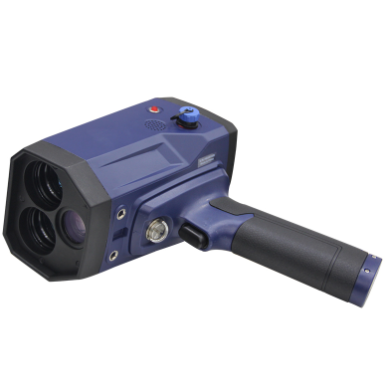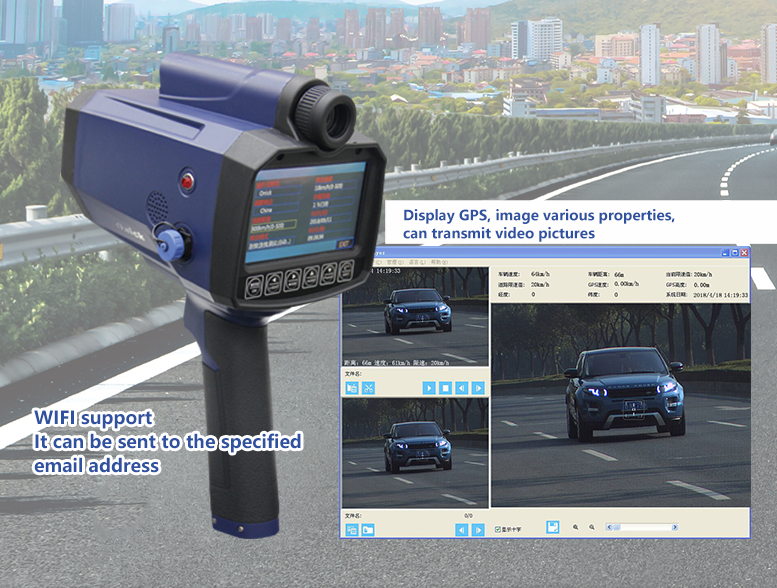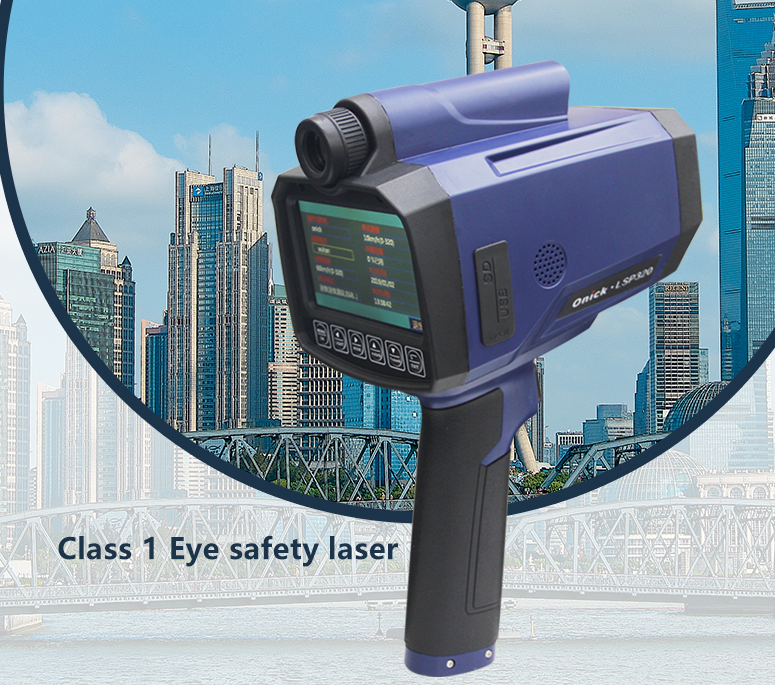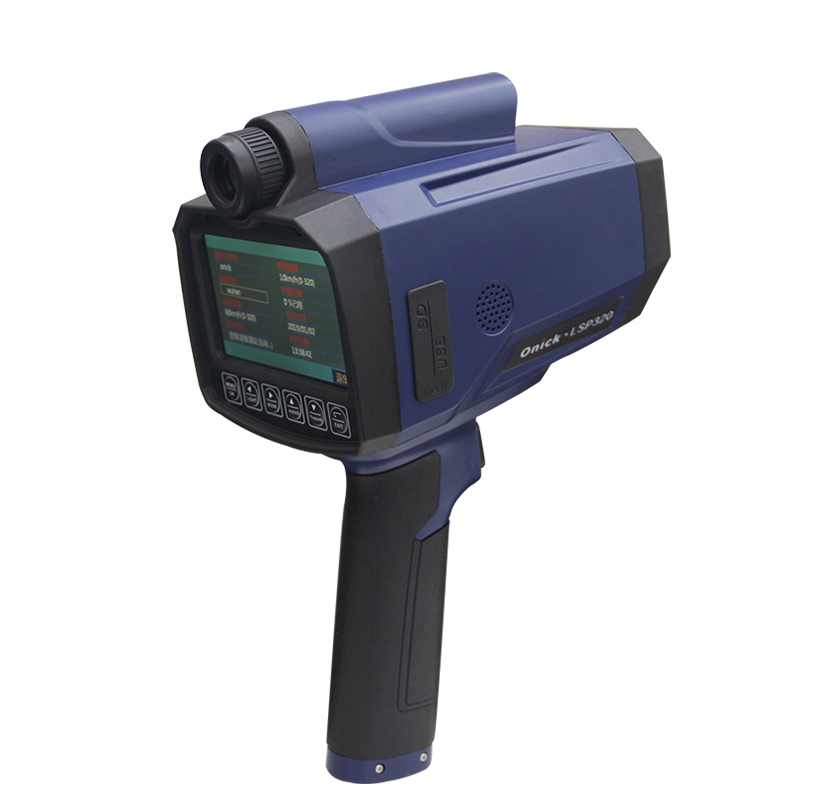Laser speedometer uses the principle of laser distance measurement. Laser distance measurement (i.e. electromagnetic wave, with a speed of 300,000 km/s) is to determine the distance between the measured object and the test point by emitting a laser beam to the measured object, receiving the reflected wave of the laser beam, and recording the time difference. Laser speed measurement is to perform laser distance measurement on the measured object twice with a specific time interval, obtain the moving distance of the measured object in the period, and thus obtain the moving speed of the measured object.

Comparison with radar speed measurement
Radar speed meter laser speed meter
Illumination surface: large, easy to capture small target, can accurately aim at any target
Measurement time: slow, easy to be reversed Fast speed measurement, will not be reversed Speed measurement error: ±2 km/h, ±1 km/h
Farthest distance measurement: 800 meters, 2400 meters
Impact on human body: electromagnetic radiation, harmful to human health The 904nm infrared light that passes the FDA first-level standard has no effect on the human eye and no radiation

Law enforcement departments in developed countries are increasingly using laser devices to measure speed. Traffic law enforcement departments in some parts of my country have also begun to introduce the use of laser speed measurement devices. With the widespread use of new equipment, radar detectors alone can no longer provide sufficient protection. This article will explain why laser signals are more difficult to detect. And it will introduce several products and solutions that can provide enough time to slow down or simply block laser signals.
How does a laser speed gun work?
A laser speed gun emits a narrow laser beam at the target vehicle. A portion of the light wave is reflected back. The computer in the speed gun can calculate the vehicle's speed based on this. When measuring the speed with a laser, the operator will aim at the part of the vehicle that is easy to reflect light. The general order is first the license plate, then the headlights, and possibly the glowing decorative parts on the front of the car.
Why is it difficult for radar detectors to be effective against laser speed measurement?
Traditional radar guns emit a wide range of radar waves and reflect them on the surface of any object to form scattered waves. This feature makes radar signals extremely easy to detect. Even for real-time speed radars, it is often easy to alarm in advance. When the radar gun measures the speed of surrounding vehicles, the radar detector can easily capture those scattered radar signals.
At a distance of 300 meters, the laser wave is only 0.6 meters wide. And it does not scatter. So the radar detector will only alarm when the laser speed gun is accurately aimed. In most cases, it has been aimed before the alarm. Since the laser speed gun can measure the speed of the vehicle within 1 second, you will not have enough time to slow down.

Fortunately, there are several countermeasures on the market for drivers to choose from. They are divided into two categories: active and passive.
Active
The best and most reliable is to install a laser blocker. It belongs to an active laser defense device.
According to the evaluation of a third-party authoritative organization, the Escort ZR3 and Bell RX75+ are the most reliable and advanced laser speed defense devices of their kind on the market.

Passive
If the laser gun cannot receive the reflected laser wave, it cannot calculate the speed of the vehicle. The principle of passive products is to reduce the reflection of the laser. It takes more than a few seconds for the laser gun to measure the speed of the vehicle. When used in combination with high-end radar detectors, you can gain enough time to slow down.
The principle of laser ranging is that the laser emits a light beam to the target, and the target reflects the light wave back to the detector. The time taken for the light wave to travel back and forth is obtained and converted into distance. Laser speed measurement is to calculate the speed by adding the time from the emission of the laser beam to the end (continuous ranging) plus the moving distance of the target, that is, to measure the time difference from the time it is emitted to the time it is reflected back. Because the speed of light is constant, the speed of movement can be calculated.


